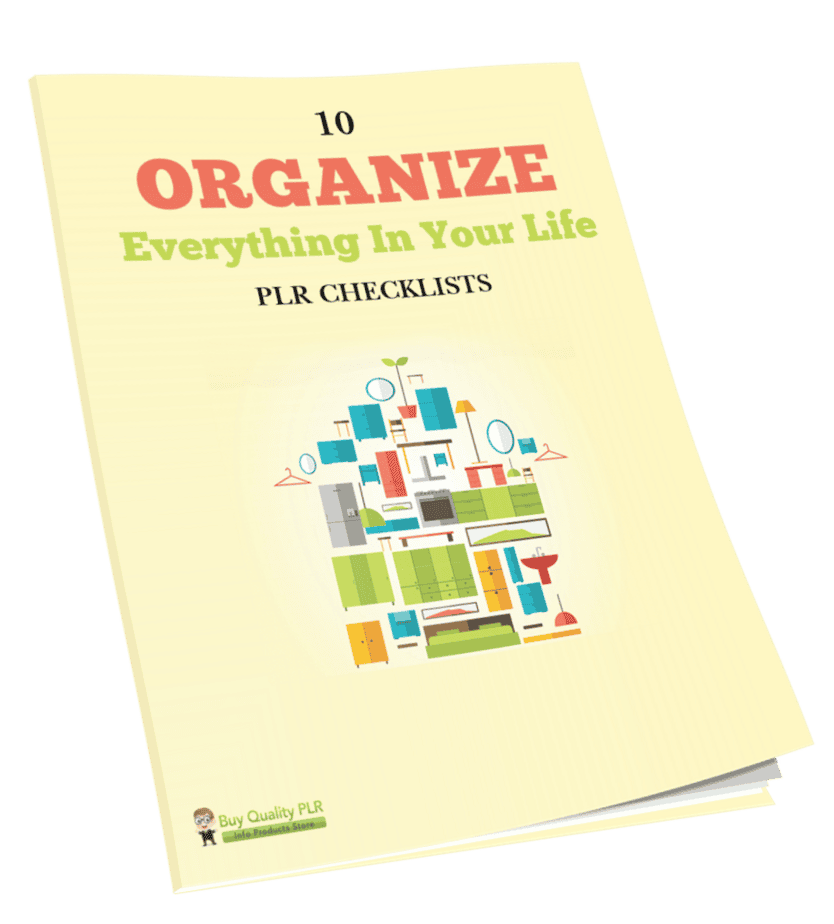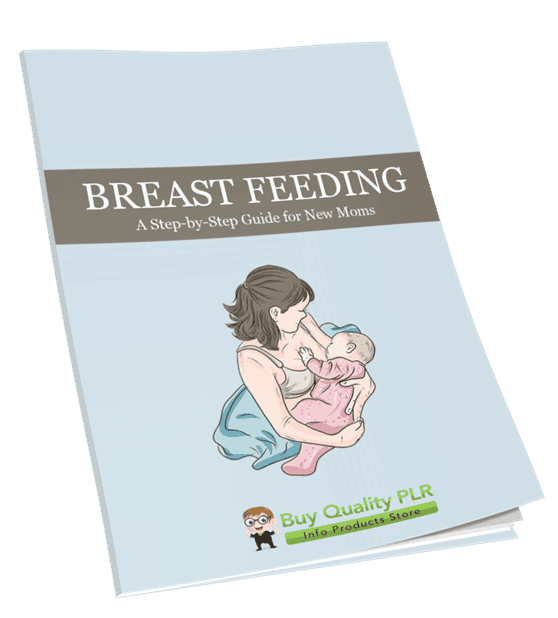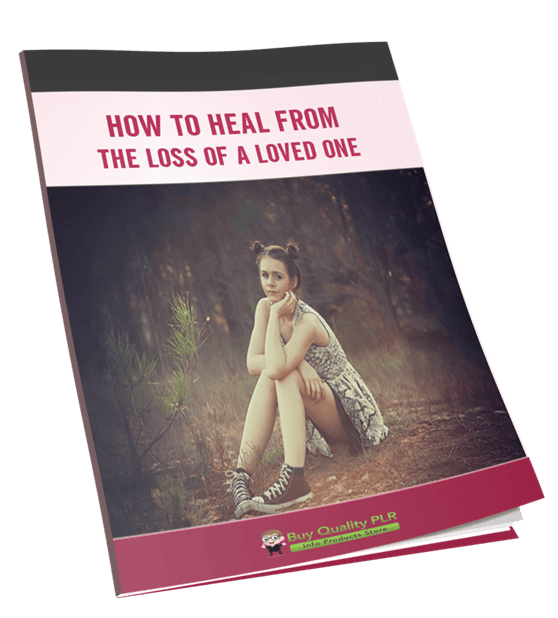
How To Heal From The Loss Of A Loved One PLR Course 20k Words
in PLR Checklists , PLR eBooks , PLR eCourses , PLR List Building Reports , Premium PLR , Premium PLR eBooks , Premium PLR Reports , Premium White Label Brandable PLR Coaching Courses , Private Label Rights Products , Self Care PLR , Self Esteem PLR , Self Help PLR , Self Help PLR eBooks , Self Improvement PLR , Self Improvement PLR EbooksChoose Your Desired Option(s)
has been added to your cart!
have been added to your cart!
#griefhealing #emotionalhealing #griefsupport #healingjourney #bereavementhelp #selfcare #emotionalwellbeing #personalgrowth #copingwithloss
How To Heal From The Loss Of A Loved One: Guide Your Audience Through Healing with This Powerful, Ready-to-Use Course
Create, Teach, and Profit with the How To Heal From The Loss Of A Loved One PLR Course!
Are you looking to offer meaningful, high-quality content that can truly make a difference in people’s lives? The How To Heal From The Loss Of A Loved One PLR Course is designed to help you provide a compassionate and structured guide for those coping with the loss of a loved one. With Private Label Rights (PLR), this course is yours to customize, rebrand, and use as your own, allowing you to support others while growing your business—all for just $17.
This course offers a thoughtful blend of practical strategies and emotional support to guide individuals through grief while balancing their professional lives. Whether you’re a coach, therapist, or content creator, this package allows you to offer a complete, ready-to-use course that can transform lives.
Presenting…
How To Heal From The Loss Of A Loved One PLR Course
What’s Inside the How To Heal From The Loss Of A Loved One PLR Course?
This comprehensive course package includes 19,234 words of content, broken down into detailed modules, along with additional resources to enhance your offering:
Course Outline:
A step-by-step curriculum that covers the stages of grief, coping strategies, emotional resilience, and long-term healing:
- Module 1: Understanding Grief
- What is Grief? The nature of loss and its effects.
- The Stages of Grief: Understanding the Kübler-Ross model.
- How Grief Manifests in Professional Settings.
- Module 2: Coping with Loss in the Workplace
- Allowing Yourself to Grieve.
- Communicating About Your Loss at Work.
- Managing Expectations During Grief.
- Module 3: Emotional Resilience and Self-Care
- Building Emotional Resilience.
- Creating a Support System.
- Self-Care Practices for Healing.
- Module 4: Navigating Conversations About Loss
- Discussing Grief with Coworkers, Clients, and Business Partners.
- Supporting a Colleague Who is Grieving.
- Module 5: Long-Term Healing and Growth
- The Ongoing Process of Healing.
- Finding Meaning After Loss.
- Moving Forward with Compassion.
Plus: A Course Wrap-Up that ties everything together, providing a comprehensive journey through grief and healing.
Additional Resources Included
- Checklist – 472 words: A helpful tool for tracking progress through the course.
- FAQs – 569 words: Common questions answered, making it easier to address concerns and provide clarity.
- Sales Page – 635 words: A professionally written sales page to help you start promoting your new course right away!
How to Use and Profit from the How To Heal From The Loss Of A Loved One PLR Course
This PLR course offers endless possibilities for adding value to your business:
- Sell the Course as Is: Make some minor tweaks, add your branding, and start selling this valuable course right away.
- Break It Down into Reports: Split the modules into smaller guides and sell them for $10-$20 each.
- Bundle with Other Content: Combine this course with other products to create premium packages, charging $47-$97.
- Offer as a Membership Benefit: Add this course to your membership site and generate monthly residual income.
- Turn It into an E-Class: Host a multi-week e-class, charging $297-$497 for in-depth guidance and personalized support.
- Create a Physical Product: Turn the course into a physical book or workbook that clients can purchase.
- Convert to Audio or Video Content: Use the course as the basis for webinars, podcasts, or video series.
- Use Portions as Lead Magnets: Excerpt parts of the content for blog posts or free reports to attract new subscribers.
With the PLR license, you have the freedom to adapt and use this course in a way that suits your brand and business model.
Why Use PLR Content?
- Save Time and Effort: No need to spend hours creating content from scratch. With this PLR course, you have a high-quality, ready-made product.
- Build Authority in Your Niche: Offering a comprehensive course on such a sensitive topic can establish you as an expert in providing emotional support and guidance.
- Reach a Wider Audience: Provide valuable resources to clients who are seeking help during a difficult time, and grow your client base through genuine, impactful content.
- Customizable and Flexible: Edit the content to match your voice, brand it as your own, and use it across multiple platforms.
Here’s What You Can and Can’t Do with This PLR Package
What You CAN Do:
- Sell the course with minor edits as your own.
- Break the content into smaller pieces and sell them as individual products.
- Create larger products by bundling this content with other courses.
- Use it as exclusive content in membership sites.
- Offer the course as an audio or video series.
- Excerpt portions for free giveaways or lead magnets.
- Create a new product and flip it for profit.
What You CANNOT Do:
- Pass on PLR or resell rights to your customers.
- Give the complete course away for free without significant edits.
- Offer 100% commissions to affiliates.
- Add the content to existing products that customers have already purchased.
Get Started Today for Just $14.99!
This How To Heal From The Loss Of A Loved One PLR Course offers a unique opportunity to provide life-changing content to your audience while also building your brand. For only $14.99, you’ll receive a full, ready-to-use course with all the resources you need to succeed.
Take the First Step Toward Healing and Growth—Order Now!
Don’t miss out on this opportunity to guide others through their journey of healing while expanding your content library. Click the button below to get instant access to the How To Heal From The Loss Of A Loved One PLR Course and start making an impact today!
has been added to your cart!
have been added to your cart!
Here A Sample of What Inside the How To Heal From The Loss Of A Loved One PLR Course
Designed for professionals, this course emphasizes vocabulary, phrases, and communication skills needed for international business environments, meetings, presentations, and networking.
Losing a loved one is one of the most difficult experiences we face, but healing is possible. This course will guide you through the journey of grief and healing while providing tools to navigate your professional life. You’ll learn strategies to cope, communicate effectively about your emotions, and support others in similar situations.
Learning Objectives:
Understand the stages of grief and how they manifest in personal and professional contexts.
Develop emotional resilience while maintaining professionalism.
Learn to express and communicate feelings effectively in work and social environments.
Discover self-care practices and support systems for long-term healing.
Module 1: Understanding Grief
Goal: Explore the concept of grief, its impact on the mind and body, and the unique ways it affects professionals.
1.1 What is Grief?
Definition of grief: Understanding loss and emotional reactions.
Grief is a deep emotional response to loss, particularly the loss of someone or something significant, such as a loved one, a relationship, or even a life transition. It is a natural and personal process, marked by a range of emotions including sadness, anger, guilt, and even numbness. These feelings may ebb and flow in intensity and can affect a person emotionally, physically, and mentally.
Grief isn’t just an emotional reaction; it can manifest in physical symptoms like fatigue, changes in appetite, or sleep disturbances. People also experience grief differently, and there’s no set timeline for how long it lasts. Understanding grief involves recognizing that these emotional reactions are normal and necessary parts of adjusting to life after a loss. It’s about processing and expressing feelings in ways that help individuals heal over time, while allowing room for personal growth and adaptation.
The nature of loss: Recognizing grief in different forms (loss of family, friends, colleagues).
Loss is an inherent part of life, and it can manifest in various forms, each evoking distinct emotional reactions and coping mechanisms. Recognizing these forms of loss helps individuals understand their grief experiences better and fosters empathy towards others who are grieving. Here’s a closer look at how grief can manifest in different types of loss:
1. Loss of Family
The loss of a family member, whether through death, estrangement, or illness, can be profoundly impactful. Grief in this context may include:
- Emotional Reactions: Intense sadness, anger, guilt, or regret. Individuals might feel a sense of emptiness or a longing for the connection that was lost.
- Physical Reactions: Fatigue, changes in appetite, or sleep disturbances. People may find it difficult to focus on daily tasks or responsibilities.
- Social Implications: The loss of a family member can alter family dynamics, leading to shifts in roles, responsibilities, and relationships. The support system might also change, requiring individuals to navigate new family structures.
2. Loss of Friends
The loss of a close friend can feel as significant as losing a family member. This type of loss may bring about:
- Emotional Reactions: Feelings of betrayal, loneliness, or a sense of abandonment, especially if the loss was sudden or unexpected. Individuals may also experience nostalgia for shared experiences and memories.
- Physical Reactions: Increased anxiety or stress, which can manifest as physical symptoms like headaches or stomach issues.
- Social Implications: The loss may impact one’s social circle, leading to feelings of isolation or a need to seek out new friendships. Individuals might also grapple with feelings of guilt or doubt about their ability to maintain other friendships.
3. Loss of Colleagues
The professional realm also encounters loss, whether through death, resignation, or relocation of a colleague. This type of loss can trigger:
- Emotional Reactions: Grief can include feelings of confusion, anger, or a sense of instability within the workplace. Individuals may feel a loss of camaraderie and shared goals.
- Physical Reactions: Stress and anxiety related to workload and team dynamics can arise, impacting overall job performance and satisfaction.
- Social Implications: Team dynamics may shift, requiring individuals to navigate changes in roles and responsibilities. This can lead to a period of adjustment as colleagues adapt to the absence of a team member.
4. Loss of a Pet
For many, pets are beloved family members, and their loss can evoke significant grief. This may include:
- Emotional Reactions: Profound sadness, guilt over decisions made, or anger directed towards circumstances surrounding the pet’s passing.
- Physical Reactions: Sorrow can manifest as physical discomfort, fatigue, or changes in routine as the individual copes with the absence of their pet.
- Social Implications: The grieving process for a pet may not always be understood by others, leading to feelings of isolation or the need for support groups specifically for pet loss.
5. Loss Through Life Changes
Loss can also occur during significant life transitions, such as moving to a new city, changing jobs, or going through a divorce. This type of loss can involve:
- Emotional Reactions: Feelings of uncertainty, fear, or sadness related to leaving behind familiar environments and relationships.
- Physical Reactions: Stress can lead to exhaustion or anxiety-related symptoms, impacting overall health.
- Social Implications: Individuals may find themselves needing to build new social networks, which can be challenging and emotionally taxing.
Conclusion
Recognizing the different forms of loss and their associated grief reactions is crucial for understanding both personal experiences and those of others. Each type of loss presents unique challenges and emotional landscapes that require different coping strategies. By acknowledging and validating these experiences, individuals can foster healing and resilience while providing support to those around them. Understanding grief as a multifaceted process encourages empathy, compassion, and connection in the face of loss.
1.2 The Stages of Grief
Denial, Anger, Bargaining, Depression, Acceptance (The Kübler-Ross Model).
The Kübler-Ross Model, commonly known as the Five Stages of Grief, outlines a framework for understanding the emotional responses individuals may experience when facing loss. Developed by psychiatrist Elisabeth Kübler-Ross in her 1969 book On Death and Dying, the model initially focused on terminal illness but has since been widely applied to various forms of grief. Here’s an overview of each stage:
1. Denial
- Description: Denial is often the first reaction to loss. It serves as a defense mechanism to buffer the initial shock of the situation. In this stage, individuals may struggle to accept the reality of their loss.
- Emotional Reactions: Feelings of disbelief, numbness, or shock. Thoughts may include “This can’t be happening” or “I’ll wake up from this nightmare.”
- Coping Mechanism: Denial allows individuals to process their emotions at their own pace. It provides a temporary escape from overwhelming feelings.
2. Anger
- Description: As denial fades, it is replaced by feelings of anger and frustration. Individuals may direct their anger toward themselves, others, or the situation itself.
- Emotional Reactions: Intense emotions, including resentment, envy, or even rage. Common thoughts include “Why did this happen to me?” or “It’s not fair!”
- Coping Mechanism: Anger can be a way to express the pain of loss. It may be directed toward loved ones, healthcare providers, or even the deceased, as individuals seek to make sense of their feelings.
3. Bargaining
- Description: In this stage, individuals may try to regain control over their situation by making deals or bargains, often with a higher power or themselves. They may seek to reverse or minimize the loss.
- Emotional Reactions: Guilt may surface, leading to thoughts like “If only I had done this differently” or “I promise to change if I can have them back.”
- Coping Mechanism: Bargaining reflects a desire to negotiate with fate and avoid the painful reality of loss. It can provide a sense of hope, even if it’s fleeting.
4. Depression
- Description: As the reality of the loss sets in, individuals may experience deep sadness and despair. This stage is characterized by feelings of hopelessness and a withdrawal from daily life.
- Emotional Reactions: Intense sorrow, regret, and feelings of emptiness. Thoughts may include “I can’t go on without them” or “What’s the point of anything?”
- Coping Mechanism: Depression allows individuals to reflect on their loss and the profound impact it has had on their lives. It’s a necessary part of the healing process, though it can feel isolating.
5. Acceptance
- Description: Acceptance does not imply that individuals are “okay” with their loss, but rather that they recognize the reality of the situation and begin to adjust to life without their loved one.
- Emotional Reactions: A sense of calm, peace, or resolution may emerge. Individuals may start to find ways to move forward and honor their loved one’s memory.
- Coping Mechanism: Acceptance allows individuals to integrate their loss into their life narrative. They may start to rebuild their lives, setting new goals and embracing new experiences.
Important Considerations
- Non-Linear Process: It’s crucial to understand that these stages are not linear. Individuals may move back and forth between stages or experience them in a different order. Grief is highly personal, and each person’s journey is unique.
- Variability in Experience: Not everyone will experience all five stages or spend the same amount of time in each stage. The model is a guideline rather than a strict framework.
- Cultural and Individual Differences: Cultural background and personal beliefs can significantly influence how individuals experience and express grief.
Conclusion
The Kübler-Ross Model serves as a valuable tool for understanding the emotional complexities of grief. By recognizing these stages, individuals can better navigate their feelings and provide support to others who are grieving. Ultimately, the journey through grief is a deeply personal experience, one that emphasizes the importance of compassion, patience, and understanding.
Understanding that these stages are not linear, and everyone grieves differently.
Understanding that the stages of grief are not linear is crucial for recognizing the complexity of the grieving process. Each individual experiences grief in their own unique way, influenced by various factors such as personal history, cultural background, relationship with the deceased, and the circumstances surrounding the loss. Here are some key points to consider about the non-linear nature of grief and the individuality of grief experiences:
1. Non-Linear Grief
- Fluid Movement: Individuals may move between the stages—denial, anger, bargaining, depression, and acceptance—at different times. For instance, a person might feel a sense of acceptance one day, only to be hit by a wave of anger or sadness the next.
- Returning to Stages: It is common for someone to revisit earlier stages as they process their grief. For example, someone who has moved into acceptance may suddenly feel anger or guilt months later, especially during significant dates or events.
- Simultaneous Feelings: People often experience multiple stages simultaneously. For example, one might feel anger while also experiencing sadness, creating a complex emotional landscape.
2. Individual Grief Experiences
- Personalized Journey: Each person’s relationship with the deceased, along with their coping mechanisms, influences how they experience grief. Factors such as personality, resilience, and previous experiences with loss play significant roles.
- Cultural Influences: Cultural beliefs and practices can shape how individuals express grief and what is considered appropriate in their mourning process. Some cultures encourage open expression of grief, while others may emphasize stoicism.
- Support Systems: The availability and quality of support from family, friends, or community can significantly impact the grieving process. Those with strong support systems may navigate their grief differently than those who feel isolated.
3. Recognizing and Validating Grief
- No “Right” Way to Grieve: There is no universal or correct way to grieve. Encouraging individuals to express their feelings in whatever manner feels right for them fosters a healthier healing process.
- Normalization of Feelings: Validating emotions such as anger, guilt, or sadness helps individuals understand that these feelings are natural responses to loss. This acknowledgment can lead to more open conversations about grief and provide a sense of relief.
4. Grief as a Transformative Process
- Growth Through Grief: While grief can be painful, it also presents opportunities for personal growth and transformation. Many individuals find meaning in their experiences and may emerge with a deeper understanding of themselves and their values.
- Integration of Loss: Over time, individuals may learn to integrate their loss into their lives, allowing them to remember their loved ones while also moving forward. This integration can take various forms, such as establishing new traditions or honoring the deceased through acts of kindness.
5. Supporting Others in Grief
- Active Listening: Being a compassionate listener can provide immense comfort to those grieving. Allowing individuals to share their feelings without judgment encourages them to process their emotions.
- Avoiding Comparisons: It’s important to avoid comparing grief experiences, as this can invalidate someone’s feelings. Instead, recognizing that every journey through grief is unique fosters understanding and compassion.
Conclusion
The non-linear nature of grief and the understanding that everyone grieves differently are essential components of navigating loss. By embracing the complexity of grief, we can foster a supportive environment that acknowledges individual experiences and honors the unique journeys each person undertakes. This understanding not only helps those grieving feel seen and heard but also deepens our empathy and connection to one another during challenging times.
1.3 How Grief Manifests in Professional Settings
Emotional responses: How grief affects focus, motivation, and interactions at work.
Grief can significantly impact various aspects of a person’s life, including their focus, motivation, and interactions at work. When individuals are navigating the emotional turbulence of grief, they may experience a range of challenges that can affect their professional performance and relationships. Here’s a closer look at how grief influences these areas:
1. Focus
- Cognitive Overload: Grief can create a heavy emotional burden that distracts individuals from their work tasks. The preoccupation with thoughts of loss can lead to difficulties concentrating, resulting in decreased productivity and the inability to focus on tasks at hand.
- Memory Issues: Individuals grieving may find it challenging to remember important details, deadlines, or meetings. This can lead to feelings of frustration or inadequacy, compounding the emotional toll of grief.
- Mental Fatigue: The emotional labor involved in grieving can lead to mental exhaustion. Even simple tasks may feel overwhelming, reducing an individual’s ability to engage fully in their work.
2. Motivation
- Decreased Drive: Grief often saps motivation and enthusiasm. Individuals may find themselves lacking the energy or desire to tackle projects, attend meetings, or engage in goal-setting activities. This can lead to a decline in performance.
- Loss of Interest: Hobbies and professional interests that once brought joy may lose their appeal. This disengagement can extend to work-related activities, making it challenging for individuals to find satisfaction in their roles.
- Procrastination: Grieving individuals may struggle with procrastination, putting off tasks due to feeling overwhelmed or emotionally drained. This can create a cycle of stress and guilt, further diminishing motivation.
3. Interactions at Work
- Social Withdrawal: Grief can lead to withdrawal from colleagues and social interactions. Individuals may prefer solitude as they navigate their feelings, leading to reduced participation in team activities or informal gatherings.
- Changes in Communication: Grieving individuals may find it difficult to express their thoughts or feelings clearly. Their communication may become less frequent, or they may struggle to articulate their needs or ideas effectively.
- Increased Sensitivity: Grief can heighten emotional sensitivity, leading to stronger reactions to stressors or feedback. Individuals may feel more easily overwhelmed or defensive, affecting collaboration and teamwork.
- Empathy and Support: On a positive note, experiencing grief can increase empathy towards colleagues facing their own struggles. Grieving individuals may become more compassionate and understanding, fostering a supportive work environment.
4. Managing Grief in the Workplace
- Open Communication: Encouraging open conversations about grief within the workplace can help normalize these experiences. Employers and colleagues can create a culture of understanding that allows individuals to express their needs without fear of judgment.
- Flexible Work Arrangements: Providing flexibility in work schedules or responsibilities can help grieving employees manage their emotional burden while maintaining their professional roles. This may include options for remote work, modified hours, or additional time off.
- Employee Assistance Programs (EAP): Many organizations offer EAPs that provide counseling and support services. Encouraging employees to access these resources can help them process their grief and develop coping strategies.
- Peer Support Groups: Establishing support groups within the workplace can create a safe space for individuals to share their experiences and connect with others who may be navigating similar challenges.
Conclusion
Grief can profoundly affect focus, motivation, and interactions at work, presenting unique challenges for individuals in a professional setting. By fostering an environment that acknowledges and supports those experiencing grief, organizations can help employees navigate their emotions while maintaining a sense of connection and productivity. Understanding these impacts not only benefits grieving individuals but also enhances overall workplace culture, creating a more compassionate and supportive atmosphere for everyone.
The pressure to “hold it together” at work: Balancing professionalism with emotional expression.
The pressure to “hold it together” at work while navigating grief can be a significant challenge for individuals. Balancing professionalism with the need for emotional expression requires careful navigation of personal feelings and workplace expectations. Here’s an exploration of this balance, including the implications, strategies for coping, and the importance of fostering a supportive work environment.
1. Understanding the Pressure to Maintain Professionalism
- Workplace Expectations: Many workplaces have unwritten norms that prioritize professionalism, which can create pressure to suppress emotions and maintain a façade of composure. Employees may feel they need to appear strong, focused, and unflappable, even in the face of personal loss.
- Fear of Judgment: Employees may worry about being perceived as weak or unproductive if they express their grief openly. This fear can lead to internal conflict, as individuals struggle to reconcile their emotional needs with the expectation to perform professionally.
- Impact on Performance: The pressure to “hold it together” can lead to increased stress and anxiety, potentially diminishing overall performance. Employees may worry that their grief will affect their career advancement or relationships with colleagues.
2. The Importance of Emotional Expression
- Authenticity: Allowing for emotional expression can lead to a more authentic workplace environment. When individuals can share their feelings, it fosters connection and understanding among colleagues.
- Coping Mechanism: Expressing emotions can serve as a healthy coping mechanism. Suppressing grief may lead to emotional build-up, while open expression can facilitate healing and resilience.
- Building Relationships: Sharing feelings can strengthen relationships with colleagues. When others witness vulnerability, it often encourages empathy and creates a sense of solidarity.
3. Finding the Balance
- Identifying Appropriate Contexts: It’s important for individuals to identify when and where to express their emotions. Sharing feelings in private conversations with trusted colleagues or during one-on-one meetings may feel safer than in larger group settings.
- Setting Boundaries: Employees can set boundaries regarding what they choose to share. It’s okay to express that they are grieving without going into detail. This allows for emotional honesty while maintaining control over the narrative.
- Utilizing Professional Support: Seeking support from therapists, counselors, or employee assistance programs (EAPs) can provide individuals with strategies to manage grief outside of the workplace, reducing the pressure to express emotions in professional settings.
4. Creating a Supportive Work Environment
- Encouraging Open Communication: Organizations can promote a culture of openness by normalizing conversations around grief and emotional well-being. This can help reduce stigma and create a safe space for individuals to express themselves.
- Training for Managers: Providing training for managers and supervisors on how to support grieving employees can make a significant difference. Managers who are empathetic and understanding can foster an environment where emotional expression is welcomed.
- Flexible Policies: Implementing flexible work policies, such as allowing for time off or flexible hours, can help employees navigate their grief while maintaining their professional responsibilities.
5. Strategies for Balancing Professionalism with Emotional Expression
- Mindfulness Practices: Engaging in mindfulness techniques, such as deep breathing or meditation, can help individuals center themselves and manage their emotions throughout the workday.
- Scheduled Check-Ins: Setting aside time to check in with oneself can help individuals assess their emotional state and determine when they may need to express their feelings or seek support.
- Journaling: Writing about grief can be a constructive outlet, allowing individuals to process their emotions privately before deciding whether to share them with others.
Conclusion
Balancing the pressure to “hold it together” at work with the need for emotional expression during times of grief is a complex and often challenging endeavor. By fostering a supportive workplace culture that values both professionalism and emotional honesty, organizations can help individuals navigate their grief more effectively. This balance not only benefits employees’ well-being but also enhances overall workplace morale, productivity, and camaraderie. Understanding and compassion in the workplace create an environment where everyone feels empowered to be their authentic selves, even amidst personal challenges.
We’re also giving these extra bonuses
How To Heal From The Loss Of A Loved One – Checklist
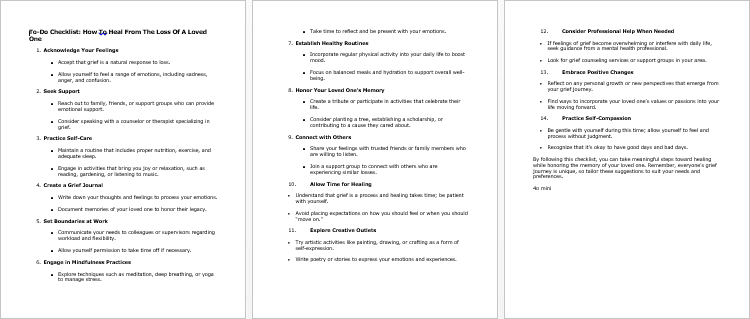
How To Heal From The Loss Of A Loved One – FAQs

How To Heal From The Loss Of A Loved One – Salespage Content
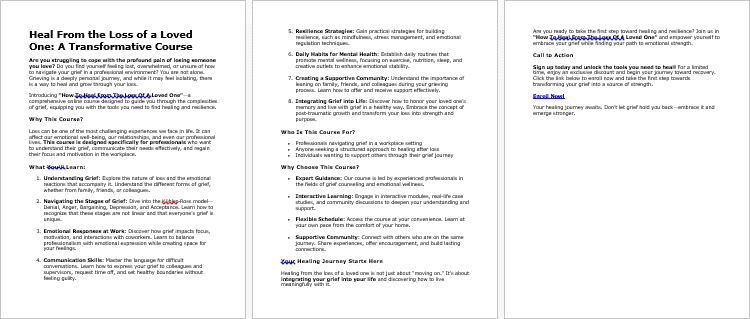
Package Details:
Word Count: 19 234 Words
Number of Pages: 80
How To Heal From The Loss Of A Loved One – Bonus Content
Checklist
Word Count: 472 words
FAQs
Word Count: 569 words
Salespage Content
Word Count: 635 words
Total Word Count: 20 910 Words
Your PLR License Terms
PERMISSIONS: What Can You Do With These Materials?
Sell the content basically as it is (with some minor tweaks to make it “yours”).
If you are going to claim copyright to anything created with this content, then you must substantially change at 75% of the content to distinguish yourself from other licensees.
Break up the content into small portions to sell as individual reports for $10-$20 each.
Bundle the content with other existing content to create larger products for $47-$97 each.
Setup your own membership site with the content and generate monthly residual payments!
Take the content and convert it into a multiple-week “eclass” that you charge $297-$497 to access!
Use the content to create a “physical” product that you sell for premium prices!
Convert it to audios, videos, membership site content and more.
Excerpt and / or edit portions of the content to give away for free as blog posts, reports, etc. to use as lead magnets, incentives and more!
Create your own original product from it, set it up at a site and “flip” the site for megabucks!
RESTRICTIONS: What Can’t You Do With These Materials?
To protect the value of these products, you may not pass on the rights to your customers. This means that your customers may not have PLR rights or reprint / resell rights passed on to them.
You may not pass on any kind of licensing (PLR, reprint / resell, etc.) to ANY offer created from ANY PORTION OF this content that would allow additional people to sell or give away any portion of the content contained in this package.
You may not offer 100% commission to affiliates selling your version / copy of this product. The maximum affiliate commission you may pay out for offers created that include parts of this content is 75%.
You are not permitted to give the complete materials away in their current state for free – they must be sold. They must be excerpted and / or edited to be given away, unless otherwise noted. Example: You ARE permitted to excerpt portions of content for blog posts, lead magnets, etc.
You may not add this content to any part of an existing customer order that would not require them to make an additional purchase. (IE You cannot add it to a package, membership site, etc. that customers have ALREADY paid for.)
Related Products That May Interest You

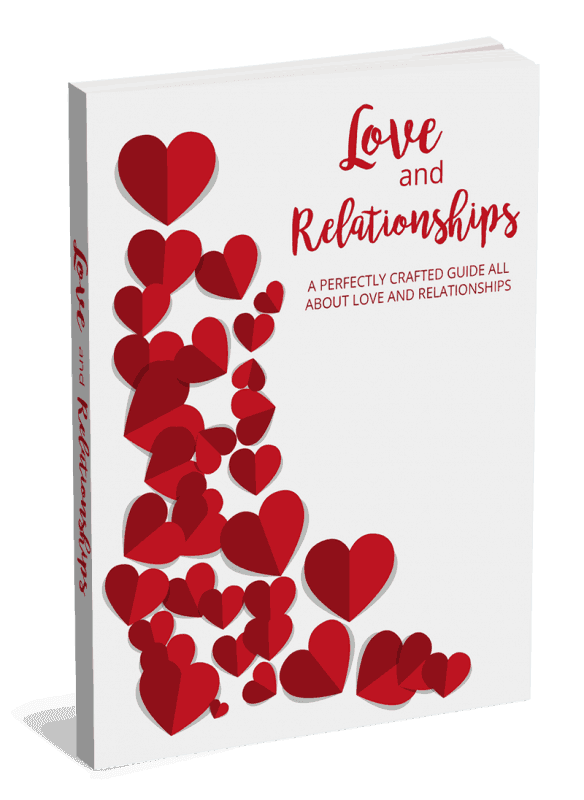

Share Now!


